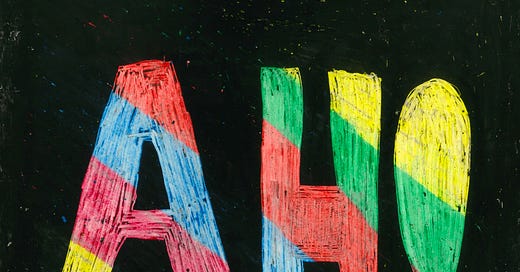Welcome to the first issue of Persuasions and Designs, a newsletter (or 'zine, if you prefer) about popular education, storytelling, community arts, and table-top role-playing games (and maybe even a bit about LARPing).
As the pandemic began, I also began a new journey to pursue and complete a PhD. Having taught at the Faculty of Environmental Studies at York University (now renamed the Faculty of Environmental and Urban Change) for over 20 years and having practiced popular education for over 40 years, I have amassed both a great deal of experience and a lot of material resources and, while I share this all the time, I never seem able to share as much as I wish I could. Thus this newsletter/'zine and my hope that this will find a readership of educators, activists, trainers, organizers, artists, and more.
My PhD is, ostensibly, about creating an archive (a counter-archive, actually) of Canadian popular education. My qualification of "ostensibly" is meant to signal that this PhD project also has many facets, not least of which is revisiting my lifetime of experience to make sense of what I have witnessed, participated in, and collected and, of course, what is worth sharing. Also, in keeping with the organic and ever-evolving nature of popular education (especially as strongly influenced by Brazilian philosopher of education Paulo Freire), I am passionately interested in all the things that connect with and challenge it. This includes a large set of dissident and insurgent practices and theories (or praxes, if you like) such as indigenous ways of knowing, feminist pedagogy, decolonizing and anti-racist pedagogies, labour education, environmental activism and education, and many more.
Popular education has always included both a great deal of playfulness and the use of all art forms: music and song, painting and mural work, 'zines and writing and comics, and lots and lots of theatre including Theatre for Development and Theatre of the Oppressed. Thus the set of practices known most recently as "community arts" and in which I have participated my entire life. Add to this the most recent thing I have encountered: the world of TTRPGs (or simply RPG) and LARPing and, while a very late-come to these vibrant practices, I am simply amazed at the connections with popular education. TTRPG refers to table-top role-playing games, the most famous of which is Dungeons and Dragons (though there are now, after 50 years of D&D, hundreds, if not thousands, of such games set in fantasy, science-fiction, and fiction worlds). LARP refers to Live Action Role Playing and, as with RPGS, there are hundreds of different examples. I am particularly pumped about the world of Nordic LARP which has developed LARPing in fantastic ways and which I have been comparing and contrasting with practices such as Theatre of the Oppressed.
My plan is for Persuasions and Designs to be freely available and to be able to use it to disseminate my resources, stories, research, and musings about all of the above. In my collection are literally thousands of techniques/methods/practices for doing popular education but which are also relevant to many other approaches to learning and teaching. This newsletter/'zine will also include descriptions of these methods that you can adopt/adapt and apply in your own life and work. (See below for an example of such techniques.) This is the beginning of the counter-archive. That said, I also hope that I might persuade some of you readers to contribute financial support once I sort out how best to set that up.
Meanwhile, please consider subscribing, please spread the word as wide as you can.
__________________________________________________
Toolkit
BUSES - a group energizer and exploration game about group make up. Best for groups of 12 to 50; 10 to 20 minutes. (A more detailed description including history and thoughts on how to debrief will be featured in an upcoming issue of Persuasions and Designs).
Explain to the group that you are all at a very chaotic bus station where the buses have different destinations than what you are used to. The facilitator will call out the destination (category) of the buses and everyone is to quickly self-organize to get on the bus that matches their destination.
Start with a simple category that everyone is likely to share and be comfortable with such as eye colour or zodiac symbol (assuming most people are familiar enough with the zodiac). Once the facilitator calls out the category everyone must find those people in the group who match their choice and form a small group. E.g., for eye colour, all brown-eyed people must find each other, all blue-eyed must find each other and so on.
Once the chaos has settled, the facilitator can call for attention and do a go-around to ask what exactly the groups are. You can also take a moment and ask participants to introduce themselves to each other in their bus.
Other possible bus destinations (categories) include: Number of languages spoken, number of siblings, country (or continent or province/state) of birth, decade of birth, number of children, gender, birth order in your family, number of years with your organization, ethnicity, etc.



I have a very vivid memory of my encounter/class with you when you proposed this activity to us, your students. And since then I used it some times!